Eight beef producers share their recent changes
Remarque : cette page web n’est actuellement disponible qu’en anglais.
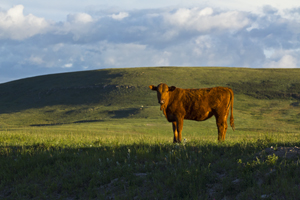
Canadian beef producers appear to be keeping up with the often heard axiom “the only constant in life is change”. With that in mind, these eight beef producers from across the country talk about recent changes they’ve made or are making in their farming operations.
Some of the changes are management related, others are operational, some involve getting a broader perspective of expert advice, and another was about how to make a job simpler when you’re wearing your mitts.
They are fairly easy to moderate, sometimes major changes – even a series of relatively small tweaks — these producers are making in management and production practices that either improve their management skills, increase forage or beef production efficiency, or just increase their knowledge to ultimately help them achieve the bottom line goals — save time or money, reduce costs, increase returns, improve profitability.
TREVOR WELCH
GLASSVILLE, NB
Rotational Grazing and Forage Stand Improvements
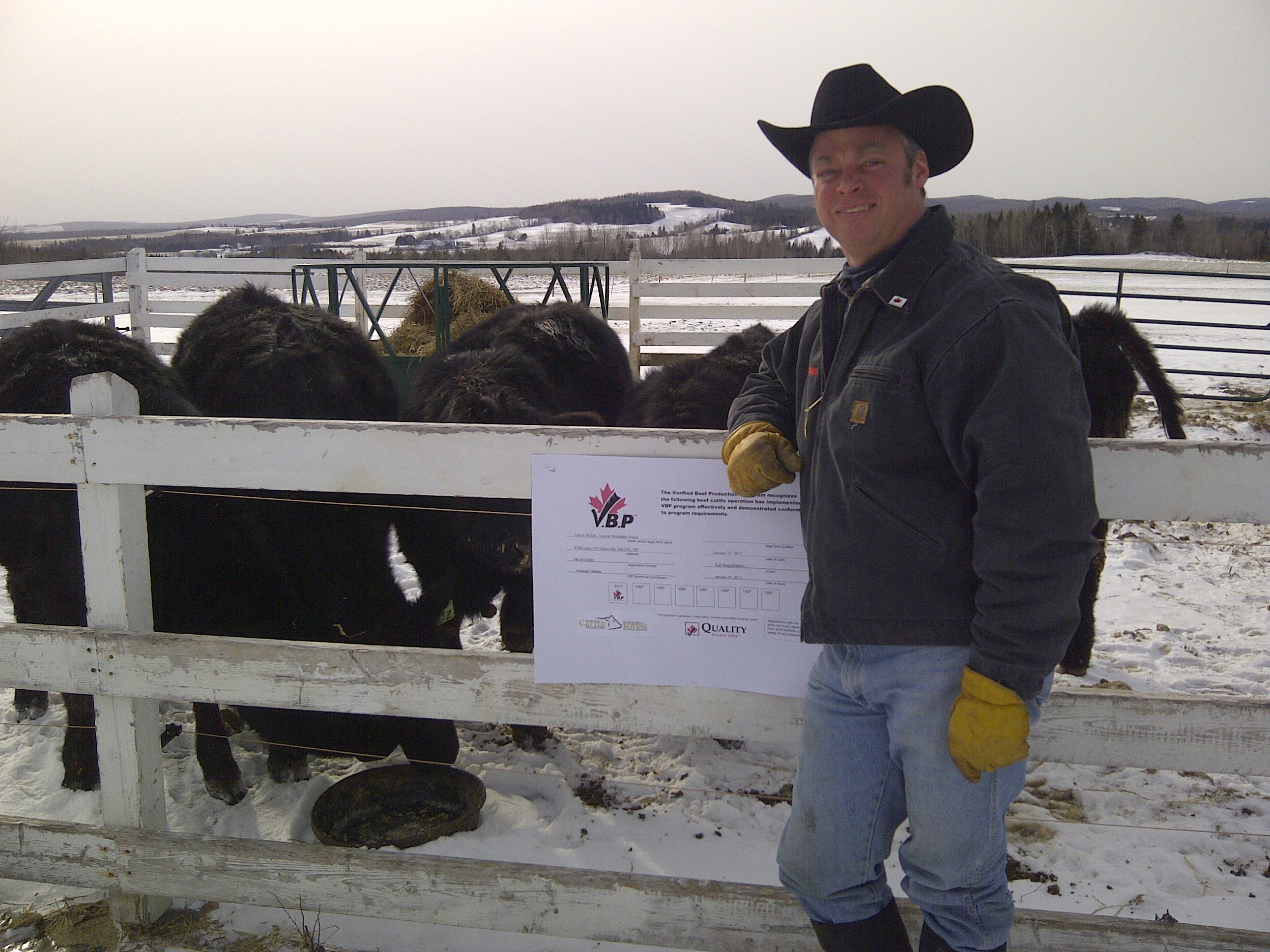
Trevor Welch has been developing a rotational grazing system on his western New Brunswick family farm over the past three years. Season long grazing was fairly successful with a small herd of beef cattle, but as he plans to expand the herd, he’s looking to increase the carrying capacity on a limited land base.
“We own most of our pasture land, and also rent some land as well,” says Welch, who is the fourth generation on the five generation farm — his son Taylor is interested in farming and his dad, Fred, is also still involved. As with most parts of Atlantic Canada a 40-acre pasture can produce enough forage to support a 30-cow beef herd for the season. “But with season-long grazing there were always some areas that would be underutilized and other areas that were overgrazed,” he says. The Welch’s run a herd of purebred and commercial Black Angus cattle.
In recent years, with the home pastureland for example, he has cross-fenced 40 acres into 12 paddocks. The perimeter of the field has a permanent fence, but most of the interior paddocks are created with portable electric fencing. The fencing has not only allowed Welch to move the cattle through the paddocks in sequence over the grazing season, but also gives him the opportunity to exclude cattle from certain paddocks as they are re-seeded to renew some 30-year old forage stands that had played out.
With the system he has developed each paddock is between two and three acres in size. During the grazing season, the herd is moved every two or three days to fresh grass. The rotation works so each paddock gets at least a 30-day rest to regrow before the herd returns.
While some areas of the field are reseeded, he also helps renew forage stands in other areas with frost seeding. This involves broadcast applying a forage seed mix to frozen ground in early spring, and then allowing cow hoof action to work seeds into the soil. “It’s not a dramatic difference but we are starting to see new forages emerge in areas where they weren’t before,” he says. The seed mix is a blend of grasses and legumes. He is including a new fescue grass seed with improved frost tolerance, that might help keep stands productive later in the season, since a killing frost in September is fairly common. Some paddocks each year also receive a manure application, from manure stockpiled from the winter feeding period.
Although the grazing system is still fairly new, Welch says the pasture is more productive. Depending on the growing season, he is able to stockpile forage in some paddocks during the summer so it can be used later in the fall, especially when growing conditions are usually dry.
With the combination of efforts — rotational grazing and forage stand improvements — he’s been able to extend the grazing season by two to three weeks. Over the next two to three years he plans to increase the stocking rate on the pasture to support up to 50 head of cattle in the rotational grazing system.
To also better manage time and resources he started a small fall-calving commercial-cow herd last fall. The purebred herd calves through February and March while the 10-head commercial herd calves in November. “By having another small group of calves ready for market at different times it helps with cash flow, and also improves workflow during the year,” he says.
GIB DRURY
GATINEAU HILLS, QC
Putting Scrap Materials to Use
Gib Drury has a couple of recycling ideas that have made a difference on his western Quebec farm in the Gatineau Hills area, about 40 kilometres north of Ottawa.
Drury runs a 200 head commercial cow-calf herd and backgrounds about 350 head of feeders each fall and winter. Along with his own calves he buys another 150 head for backgrounding.
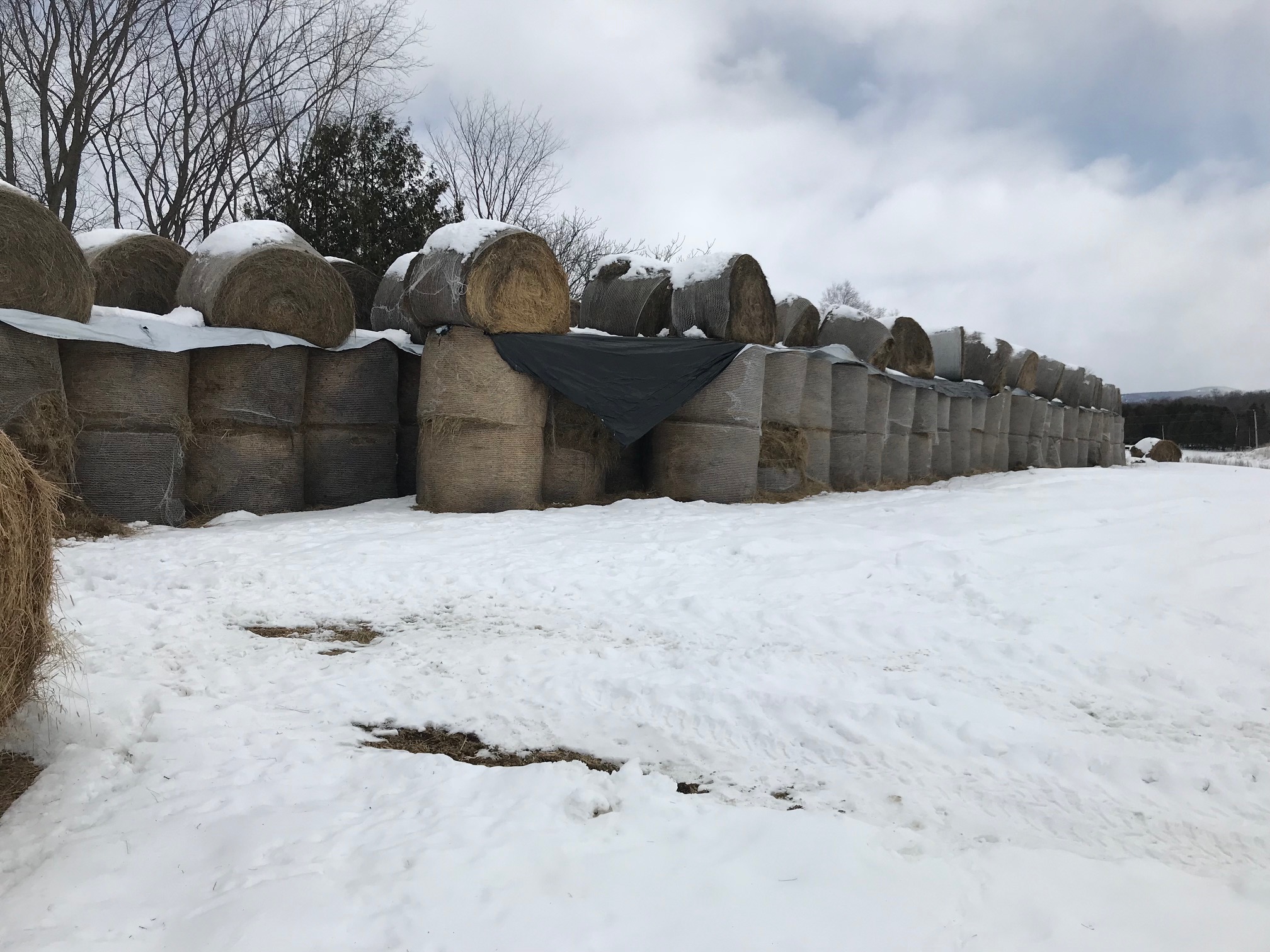
Part of his winter feed supply is stored as haylage — high moisture hay stored in airtight plastic tubing to ensile. Once the silage bales are removed he’s left with a tube of plastic that when cut open is 10 feet wide and 220 feet long. Rather than bundling it up and finding some way of disposing of it, he uses the plastic to protect baled hay.
Depending on the haying season, he hopes to produce good quality hay in large round bales, but inevitably some will get rained on and therefore are lower quality hay. Nothing goes to waste.
The good quality net-wrapped dry hay he stacks on the ground, in columns, two-bales high and two bales wide, flat side up. “On top of that hay I lay one of these opened plastic tubes to protect the hay from rain and snow,” says Drury. “And then a few poorer quality rained on hay bales are placed on top of the plastic to hold it in place. The plastic is put to good use and my hay is protected.” He says a great benefit of stacking hay this way is that the net wrap or twine never freezes to the bale in the winter, making it easier to remove.

One other great recycling idea involved making a better gate latch. Drury uses lap-type seat belts out of old vehicles to make an easy to operate gate latch. “Usually it is not hard to find an old vehicle someplace,” says Drury. “I cut the lap belts out, nail each cut end on each side of the post and I have a durable gate latch. What I really like about these latches is that I can open and close the latch (seat belt) with my mitts on. They stand up very well to the weather and if you do need another, they are not too hard to find.”
COREY VAN GRONINGEN
CAYUGA, ON
Scheduled Movement and Segregation During the Calving Season

To keep newborn calves healthy, Corey Van Groningen keeps his 350 head commercial cowherd moving during calving season.
Van Groningen, who farms with family members at Cayuga, Haldimand County, west of Niagara Falls has been following the Sandhills calving system for several years. Basically it breaks the herd into three or six calving groups.
“A few years ago we were having problems with scours during calving season,” says Van Groningen. Even though they were vaccinating against scours, the whole herd would be held in one group for the on-pasture calving season that started in May. But as a few cases of scours developed it would spread through more animals over the six-week calving period.
“So with the Sandhills system (developed in the Nebraska sandhills) the whole herd starts calving on pasture and then every one or two weeks we sort out the cow-calf pairs, they stay behind and the rest of the herd that hasn’t calved moves to new fresh ground,” he says. “And then once there is a week or two worth of new calves on the second pasture, we sort again, and again move the cows that haven’t calved to new ground. And we keep doing that until everyone has calved.”
Depending on the rate of calving, Van Groningen does the sort and moves the herd every week creating six mini-calving seasons, or every couple weeks, creating three mini-calving seasons.
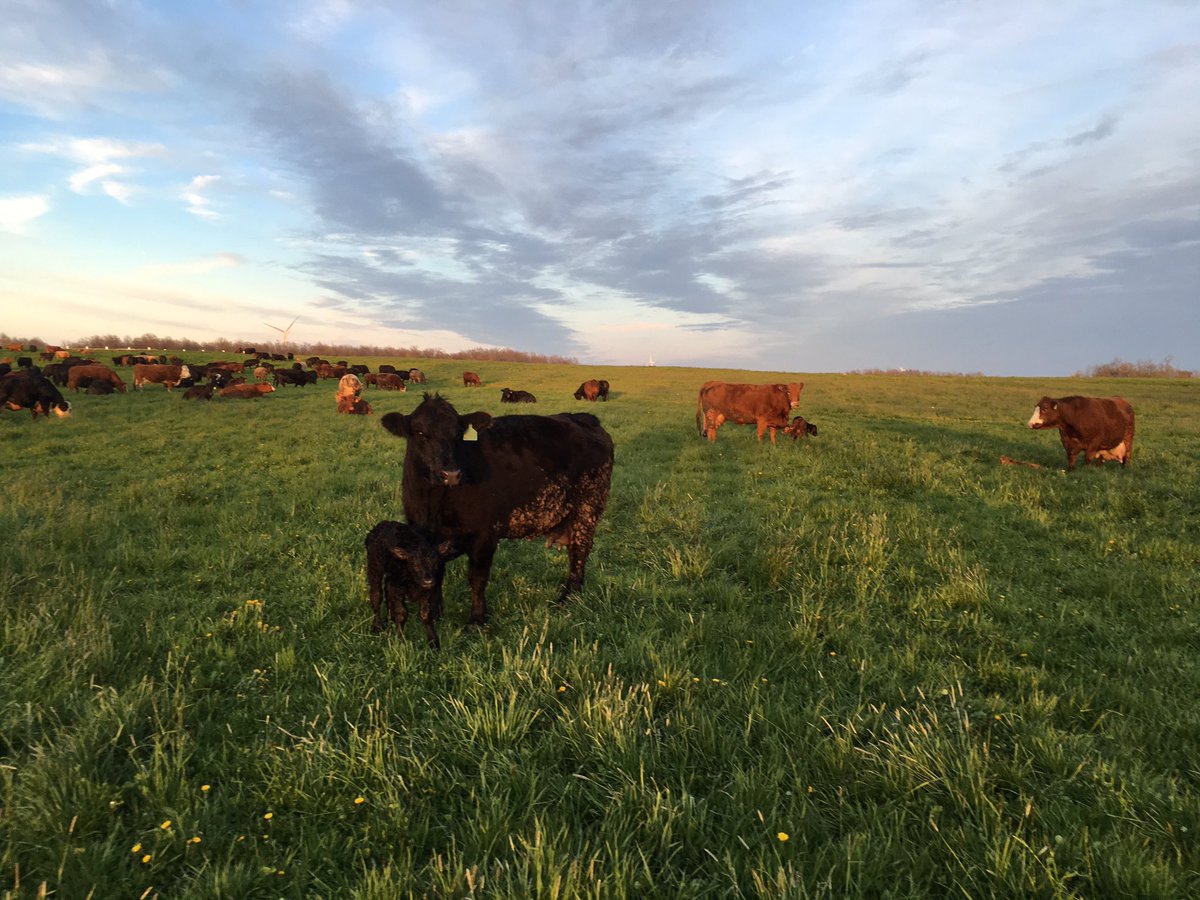
“Since we’ve been doing it we haven’t had any problem with scours,” he says. “With each move a group is moving to fresh, clean ground so there haven’t been any scour outbreaks.” Van Groningen follows a fairly intensive rotational grazing system on the farm, so there are plenty of paddocks with fresh ground, and with portable electric fencing “we can create as many or any sized paddock we want.”
Another benefit of the system is reduced colostrum theft. “The other thing we observed when the herd was altogether is that we’d see some of the older (two-week old calves) nursing on some of the cows that had just freshened. So the older calves were stealing colostrum meant for the newborn calves. Sorting and moving the herd has solved that problem too.
“It does take more labour to sort and move cows, and you have to make sure watering systems are in place for each pasture, but we’re not having the work of catching and treating calves for scours,” he says. Also because cows are calving as grazing season is in full tilt, it takes some management to ensure paddocks are properly stocked to provide the desired level of grazing. “Overall, not having sick calves is well worth the effort,” he says.
RAMONA BLYTH
MACGREGOR, MB
Grazing Polycrops into Winter
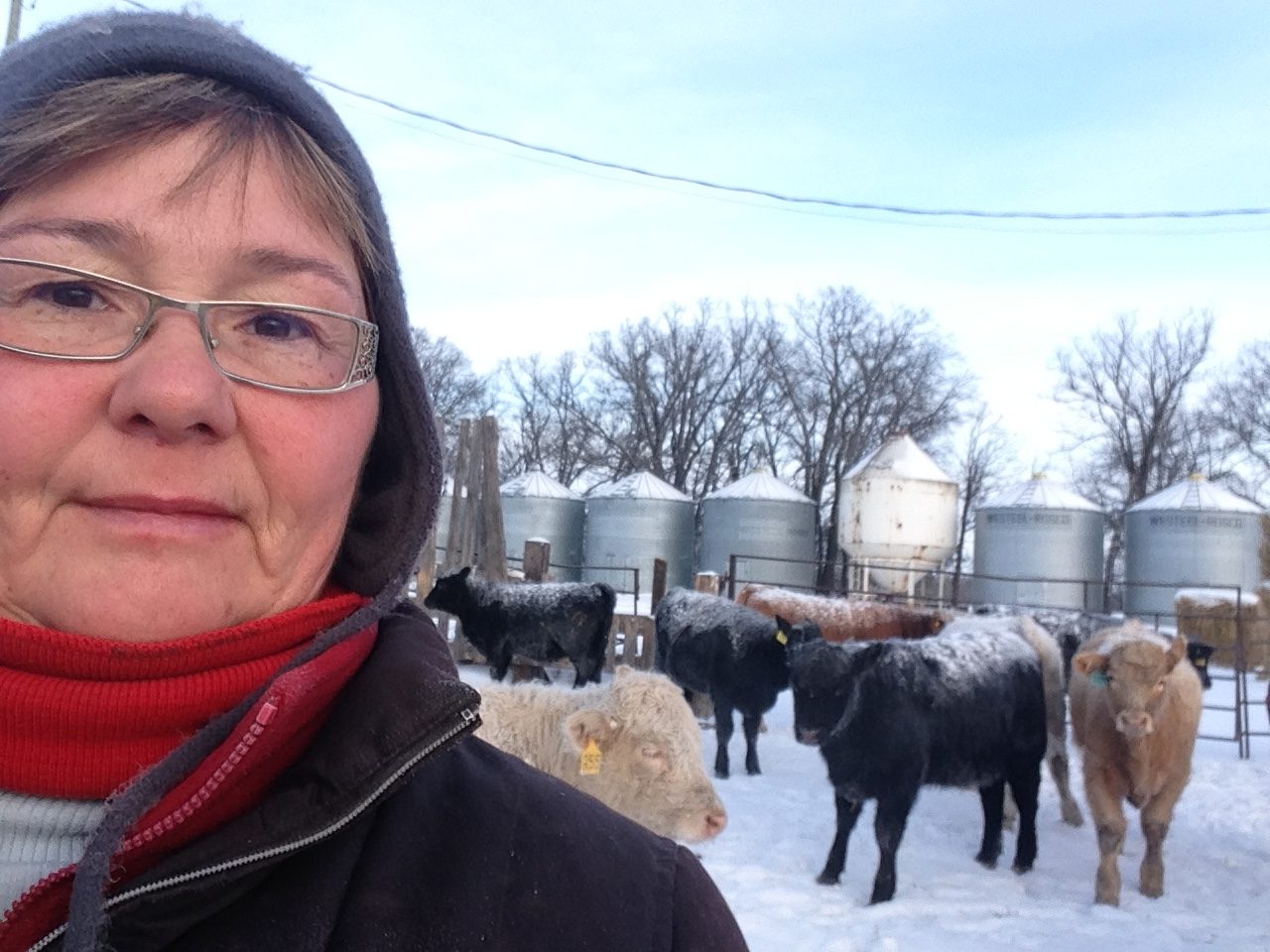
It’s been a little bit more than a tweak in management, but getting cattle out of the yard for several months over winter, and developing a nine to 10 month grazing program has helped the Blyth family of south central Manitoba improve efficiency on several levels.
Some of the fine tuning to that program in the past couple years has been to add polycrop seed blends to the forage program, says Ramona Blyth, who along with her husband Harold operate Rosehill Cattle Co. near MacGregor, about half way between Brandon and Winnipeg.
“It’s only been a couple years,” says Blyth, who is also chair of the Manitoba Beef and Forage Initiative. “But the polycrop acres have proven to be an excellent forage source and have helped to extend the grazing season. As winter feeding begins we can put out some excellent alfalfa hay, but the cattle still prefer to be nosing through the snow and the dirt to clean up the turnips and the last of the polycrops — they just love it.”
Polycrop seed blends can include a wide range of diverse plant species. Blyth has been trialing one blend that includes turnips, forage radish, hairy vetch, Italian rye grass, and crimson clover, along with oats and barley. They take a mid-season cut to produce polycrop hay or bales. And if the weather co-operates the stand will regrow to produce late fall grazing well into early winter.
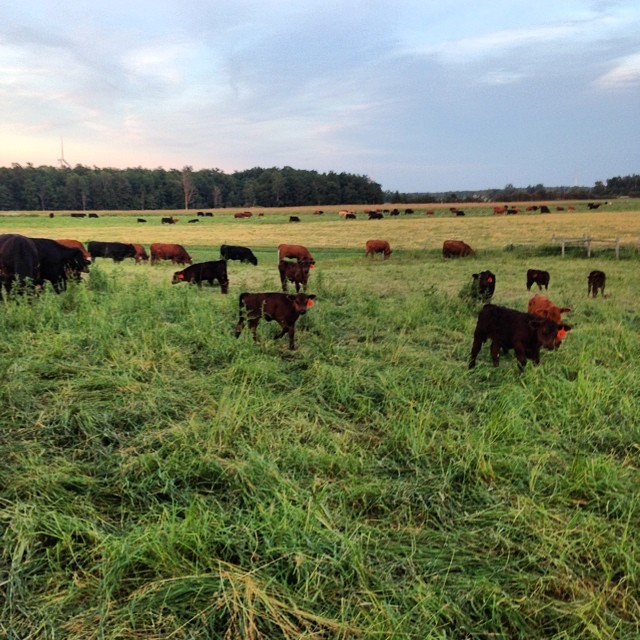
The concept behind the potentially high yielding polycrops is that almost regardless of growing conditions, at least something will grow, and with moisture it becomes a very high yielding, high quality forage stand. The diversity of shallow and deep-rooted plant species also benefits the soil. The Blyths have two 45-acre fields they alternate between polycrops and grazing corn. The polycrops produce some baled feed as well as grazing in late fall, while the grazing corn is saved for January and February grazing before cattle are brought home for calving in March.
The Blyths run a mixed farming operation with about 350 head of commercial beef cattle as well as grain and oilseed crops. The beef grazing program today is considerably different than it was 20 years ago.
“You go back quite a few years and we use to bring the cows home to wean the calves and the cows would just stay in the corral and we’d feed them all winter,” says Blyth. It was not only an expensive way to feed, but manure had to be hauled and spread come spring. They began developing an extended grazing system.
Part of the program involved installing a system of buried, pressurized water lines to deliver a year round water supply to outlying pasture areas. It’s a cost effective, energy-free system. Large, used mining truck tires were modified into durable watering troughs. The geothermal heat of the water coming up through a standpipe from the underground waterline, for the most part keeps water from freezing. Occasionally on the coldest days they may have to break an inch or two of ice on the surface, but generally the water in the troughs remain open. Water flow is controlled by curb stop valves, so when troughs aren’t needed water can be shut off. Any water left is bailed out so it doesn’t freeze solid.
Winter pasture includes hayfield regrowth, some fenced cropped stubble land, rough areas in fields not suitable for annual cropping, as well some bushland. They also began producing a blend of oats and barley greenfeed which is cut and baled. The regrowth on those fields can be used for pasture as well.

With two farm locations in close proximity, cow-calf pairs are brought into an assembly yard for sorting at weaning in early November. The calves are brought to the home headquarters, while the cows head back out for late fall and winter grazing.
The cows will fall graze as long as possible until winter sets in, then large 4x4x8 square bales are hauled to pasture locations. “We let the cows direct us on this,” says Blyth. “If the weather is nasty and they’re in a bush area then we place their feed in the bush area as well.” While mature trees are protected to provide year round shade and windbreaks for the herd, feeding in the bush area helps to knock down brush removing some of the ground cover. “It is surprising how much it opens things up,” she says. “We are starting to see more grass, more grazing, in the bush areas as well.”
TIM OLEKSYN
PRINCE ALBERT, SK
Active, Life-Long Learning
Being open to new ideas, listening, talking to experts, trying new technology and concepts — this philosophy has helped Oleksyn Bros Farms adopt a wide range of changes over the years, says Tim Oleksyn. He is one of three brothers, all born and raised on and operating the mixed cattle and grain family farm in north-central Saskatchewan near Prince Albert, northeast of Saskatoon.
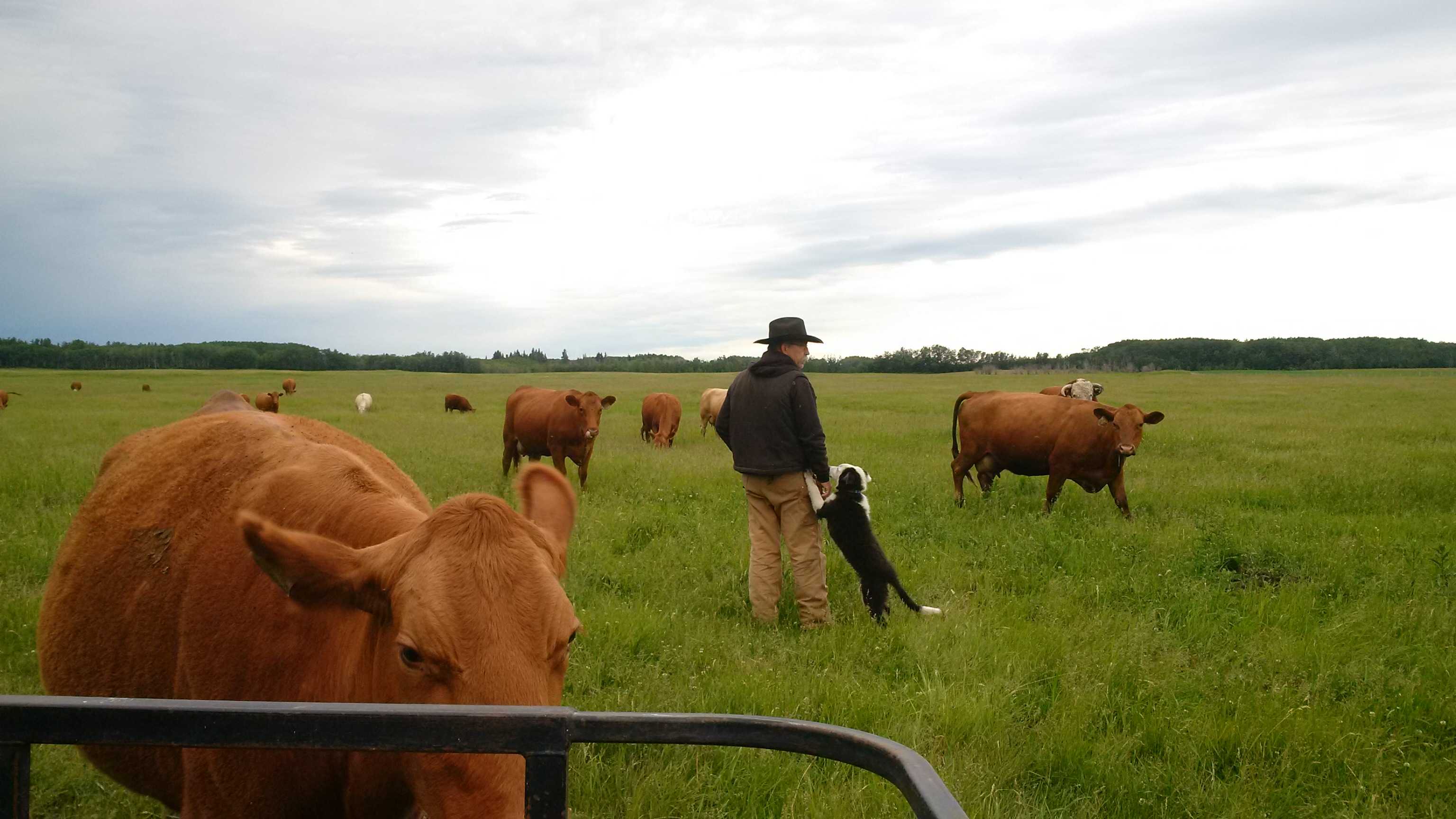
The “open to new ideas” philosophy has always served Oleksyn well in managing a commercial cross-bred beef herd that ranges in size from “sometimes too many, sometimes not enough” head. Working with horned Hereford, red factor Charolais and Red Angus genetics they’ve developed a successful program for producing F1 cattle.
“We’ve put money into trying a number of different products and technology over the years,” says Oleksyn. “And yes, it is usually money up front, but I think in just about every case each of those new ideas or those changes has improved our bottom line so I consider them good investments.”
He admits that while sometimes he thinks he knows a lot, he is a big believer in developing good networks, good partnerships within the industry, where perhaps he can learn something. For example, a partnership of expertise that includes his local veterinarian, research organizations such as the Beef Cattle Research Council, university experts, vet colleges, animal health product suppliers and others.
Listening to advice from that partnership he has tried new products such as meloxicam to reduce pain and stress in animals being processed, intranasal vaccines which provide improved health protection for young calves, learned different strategies of using or not using certain antibiotics — some of the measures he’s tried that have either reduced cost, improved herd performance or both.
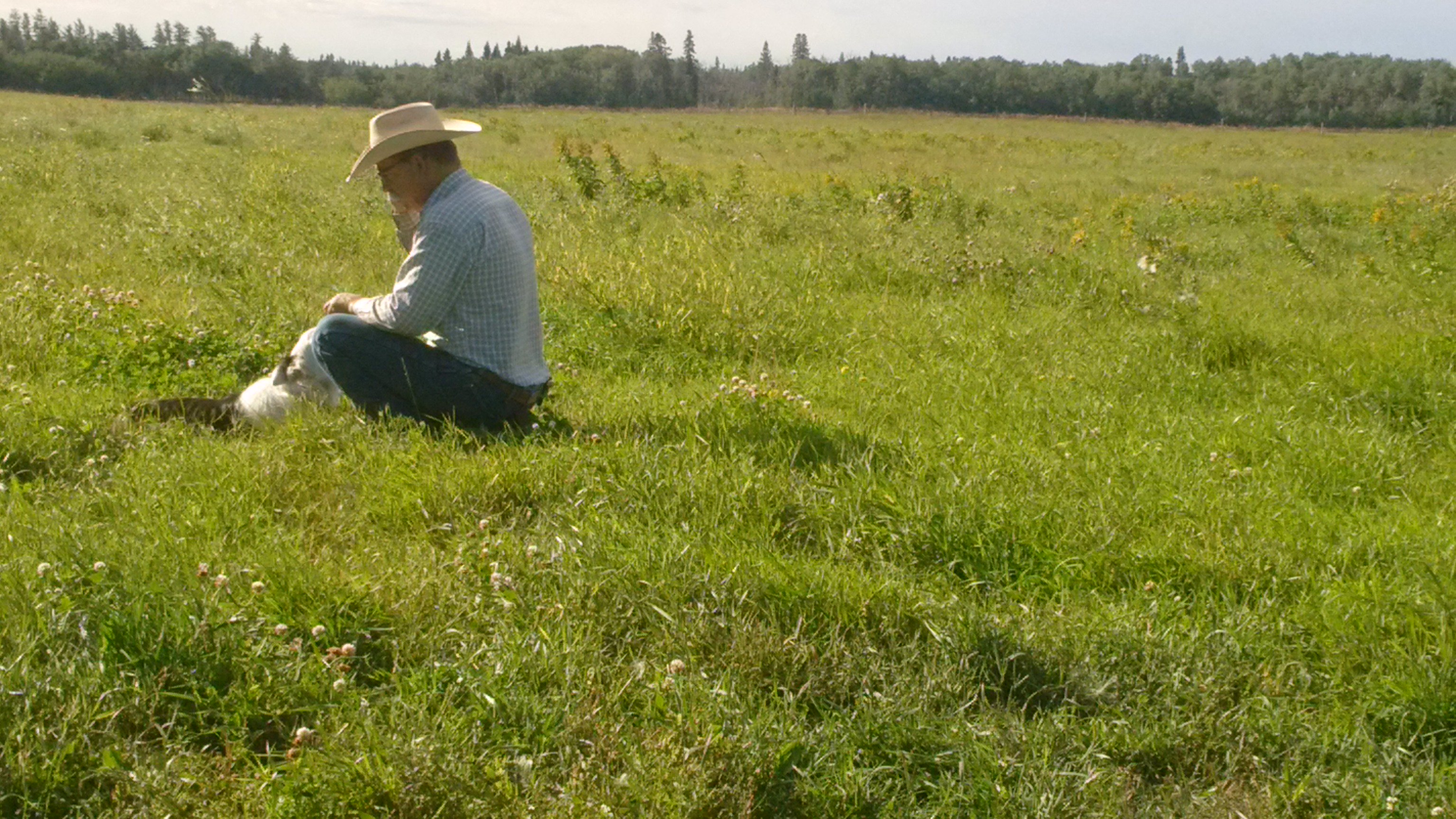
He says he’s discovered small and not so small technology changes improve his workload on a daily basis — he’s still using the first of several solar panels he’s installed to help pump water at remote watering sites, electric drive thru gates save him time and steps when getting feed out of the silage pits. RFID ear tags are not only of value for the Canadian beef cattle traceability system, but his cows can lose dangle tags when grazing in timbered areas, so the RFID tags also help with his own herd management, and he’s really impressed with new genetic testing technology “just on the cusp” of being able to provide chute side read outs on herd sire identification.
He also likes to participate in industry webinars which discuss new tools and new concepts. And he’s figuring out one of the most valuable changes is “learning to not talk, but listen to others. As I get older, there are a lot more young people involved in the industry and it is important to listen to them,” he says. “I’m finding they may be half as young as me, but three times as smart.”
LARRY SPRATT
MELFORT, SK
Saving Time with the Right Equipment
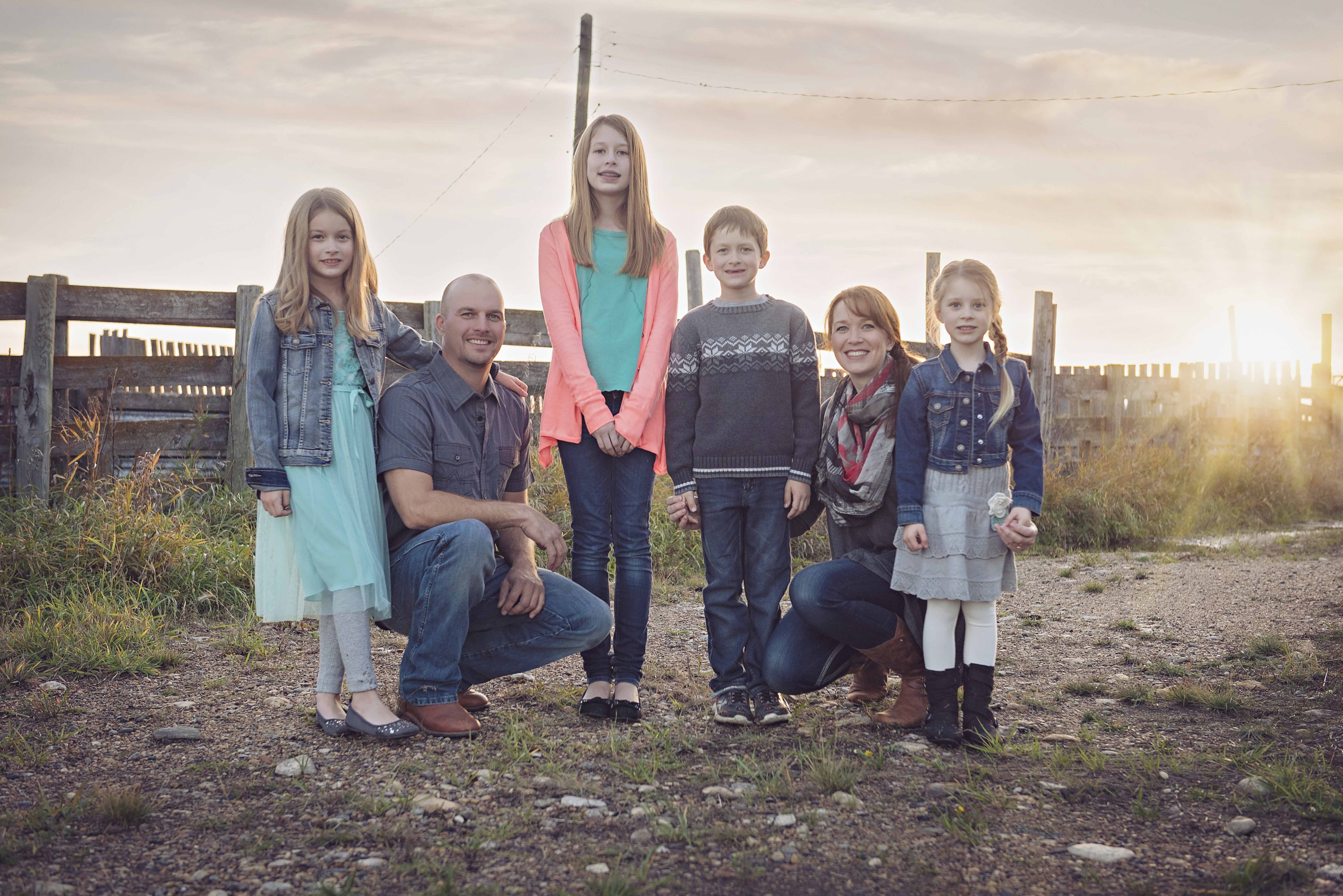
Larry Spratt says several relatively small to mid-size changes in recent years in the beef operation on their family-run mixed farming operation at Melfort, on the north-easterly side of Saskatchewan have added up to improve overall efficiency in the farming operation.
Along with 150 head of purebred Maine-Anjou and Angus cattle, they also crop about 6,000 acres and have another 1,500 acres of hay and pastureland. The challenge he says was to find efficiencies making the operation more manageable for the four Spratt families involved with Donaro Farms. They don’t hire any outside farm labor.
“The changes weren’t necessarily major,” says Spratt. “But if we could make some changes that saved fuel and time — saving 10, 15, 20 minutes a day may not seem like much, but you save that every day over five months of winter feeding, that’s several hours of tractor idling time and perhaps I am saving two, three or four days where my time could be better spent doing something else.”
With most of their pastureland located about 20 miles from the main yard, they spent extra time hauling cattle in two smaller stock trailers. They decided to invest in a cattleliner — rather than making four trips with small trailers, they could move everything in one cattleliner load.
With the winter-feeding program in that part of Saskatchewan usually starting in late October, they looked at the feeding equipment. They had a high capacity mixer wagon for feeding cattle, but a bottleneck in preparing the ration was a small grain auger that took about 15 minutes to fill the wagon for each load. They bought a larger auger with double the capacity. “The larger auger could put the grain needed in each load in five minutes rather than 15 minutes,” he says. “Again over the course of the winter those minutes add up.”
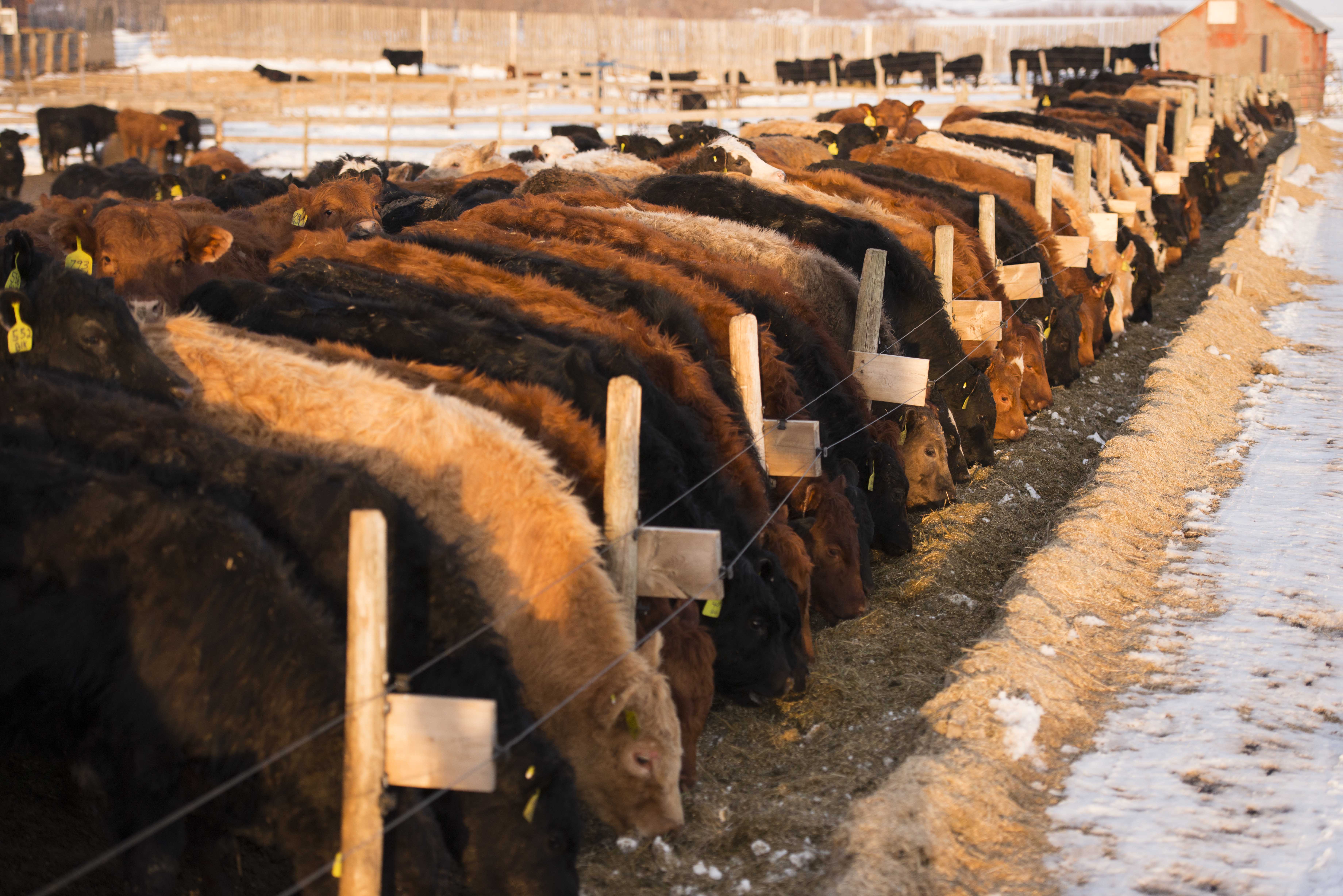
Another project he hopes to tackle this coming year is a portable penning or corral system that can easily be moved to pastures. As some of their pastureland is divided by roads, they had built or inherited what are now older permanent corrals. To improve those facilities they built some 30-foot long steel tubing panels out of used oilpatch drilling pipe, but those panels need to be moved with a front-end loader and a flat deck truck. Spratt hopes to get into the shop at some point this year to build a self-contained penning system that can be moved and easily set up from pasture to pasture as needed.
During haying season he takes a tractor trailer unit with a flatdeck trailer to the field and brings a load of bales home each day, rather than making multiple trips later on with a pickup truck and smaller trailer. “I have to get there somehow anyway, so I might as well make each trip pay,” he says.
“It does cost some money to increase the size of equipment, but at the same time I am spreading those costs over several years, improving the economy of scale, and as I say minutes saved here and there add up into hours and days where my time can be better spent.”
IAN MURRAY
ACME, AB
Taking a Systems Approach
Ian Murray has gained efficiencies on their south-central Alberta ranch by looking at things on a systems approach. Murray, along with family members operates Shoestring Land and Cattle Co. near Acme, about an hour north of Calgary, where they run between 180 and 200 head commercial cow-calf herd and backgrounding/yearling operation.
By extending the grazing season as much as he can, he’s cut winter feeding down to one to two months.

“With a systems approach, for example, our hayland isn’t just hayland,” he says. “We take a cut of hay in late June or early July but that sets it up to regrow and then provide grazing later in the year — so it is both hay and pasture land.”
Another aspect of the systems approach in recent years has been a move to delayed weaning in February. The cowherd calves May/June on pasture, but instead of weaning in October as they did for many years, the calves stay with their mothers on swathing grazing until mid-February.
“As a rule with swath grazing it costs about $1 per day to feed a cow for the winter and about 50 cents per day for her calf,” he says. “That’s a considerably lower cost than if I had put those calves in a lot and started feeding a backgrounding ration. As well, all the manure — nutrients — stay out on the field.”
Calves born in May 2018, for example, will be sold as 950 pound grass yearlings come the fall of 2019. Murray says while their rate of gain might be lower on several months of swath grazing, they soon make up any weight once they hit grass the following spring.
“Another reason we like to delay weaning is that our cows were getting too fat on swath grazing the oats and triticale swaths alone,” says Murray. “So by keeping the calves with them, they have to work a little harder and don’t get over conditioned.” As nine or 10 month old calves when they are weaned, both cows and calves experience much lower stress, he says. They sort the calves into a corral, the cows remain within contact in a field on the outside of the corral — “And last February I stuck my head outside the door the night after we had weaned and there wasn’t a sound,” he says.
One further efficiency in the system they’ve developed, the size of the cowherd is geared toward the minimum carrying capacity of the ranch. The yearlings provide flexibility. “Even in a dryer year we know we have the grass and feed to support the herd we have,” says Murray. “So if conditions warrant we can move some of the yearlings to a feedlot and either sell them or retain ownership depending on the market, but cowherd numbers aren’t going up and down.”
DUNCAN BARNETT
150 MILE HOUSE, BC
Pasture watering systems
Protecting and dealing with the environment has led Duncan Barnett to adopt a number of management changes on his ranch in the Cariboo region of the B.C. Interior.
It’s not just about just being a good steward of the environment, but also reflects improving animal welfare, and ultimately improving beef herd production, says Barnett who ranches on Horsefly Road, east of Williams Lake.
One of the most recent changes, following an extremely dry growing season and record year for forest fires in the B.C. interior, was a decision in late 2017 to switch his long established straight cow-calf operation to a cow-calf and yearling operation.
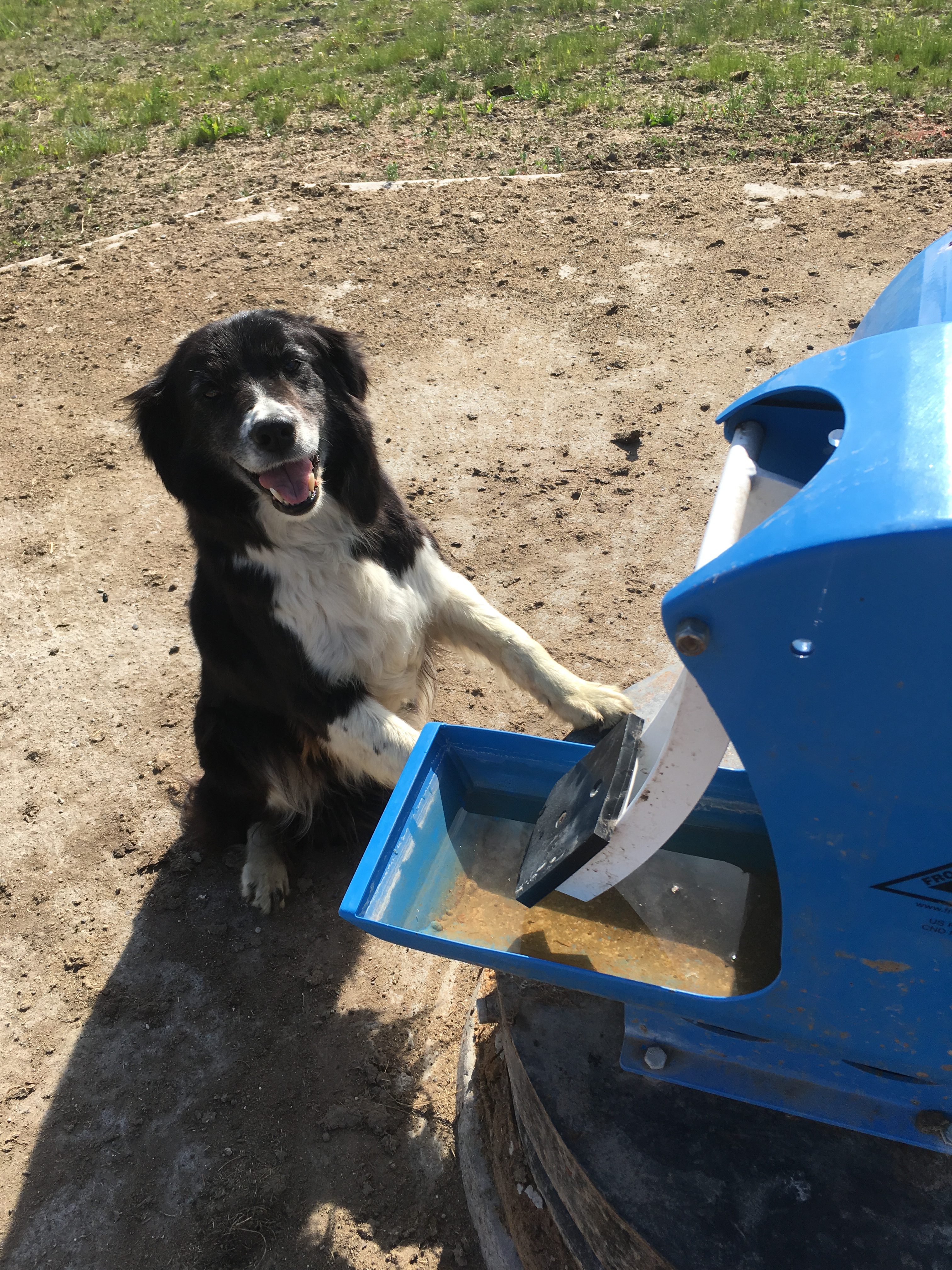
Another change he’s made in recent years, which benefits both the environment and beef herd production, is the development of off-site pasture watering systems. Actively involved in the Environmental Farming Planning program, Barnett says it was important to keep cattle away from lakes and creek to protect riparian areas near the water bodies, to protect water quality, and at times of the year when run-off can lead to flooding, to also protect livestock.
He has fenced cattle away from a lake and river that are part of his ranch and summer pastures, and where possible developed dugouts to collect runoff and hopefully provide at least seasonal and hopefully year round water supply. The dugouts have also been fenced off.
He’s tried a number of off-site water systems to deliver water to troughs for cattle on pasture — gravity pipelines, gasoline powered pumps and solar powered pumps. One of the most reliable he’s found is energy-free “cow powered” technology referred to as nose pump. Barnett has one permanent winter watering nose pump system near the home yard, and has also developed a portable nose pump system he can trailer from pasture to pasture and connect by water line to water in a dugout, pond or river.
“There is a capital cost for the equipment and to get the systems set up properly,” says Barnett. “But once it is in place it provides a trouble free and reliable watering system, that keeps cattle out of the water source. They learn very quickly how to use the nose pump, they prefer drinking clean water, and I believe it also improves overall performance.
“The portable system also improves pasture management. As long as I can tap into a water supply I can bring water to pasture areas that normally may not get used. The system makes it possible to protect the water source, yet bring clean, fresh water to the herd.”
Click here to subscribe to the BCRC Blog and receive email notifications when new content is posted.
The sharing or reprinting of BCRC Blog articles is welcome and encouraged. Please provide acknowledgement to the Beef Cattle Research Council, list the website address, www.BeefResearch.ca, and let us know you chose to share the article by emailing us at info@beefresearch.ca.
We welcome your questions, comments and suggestions. Contact us directly or generate public discussion by posting your thoughts below.